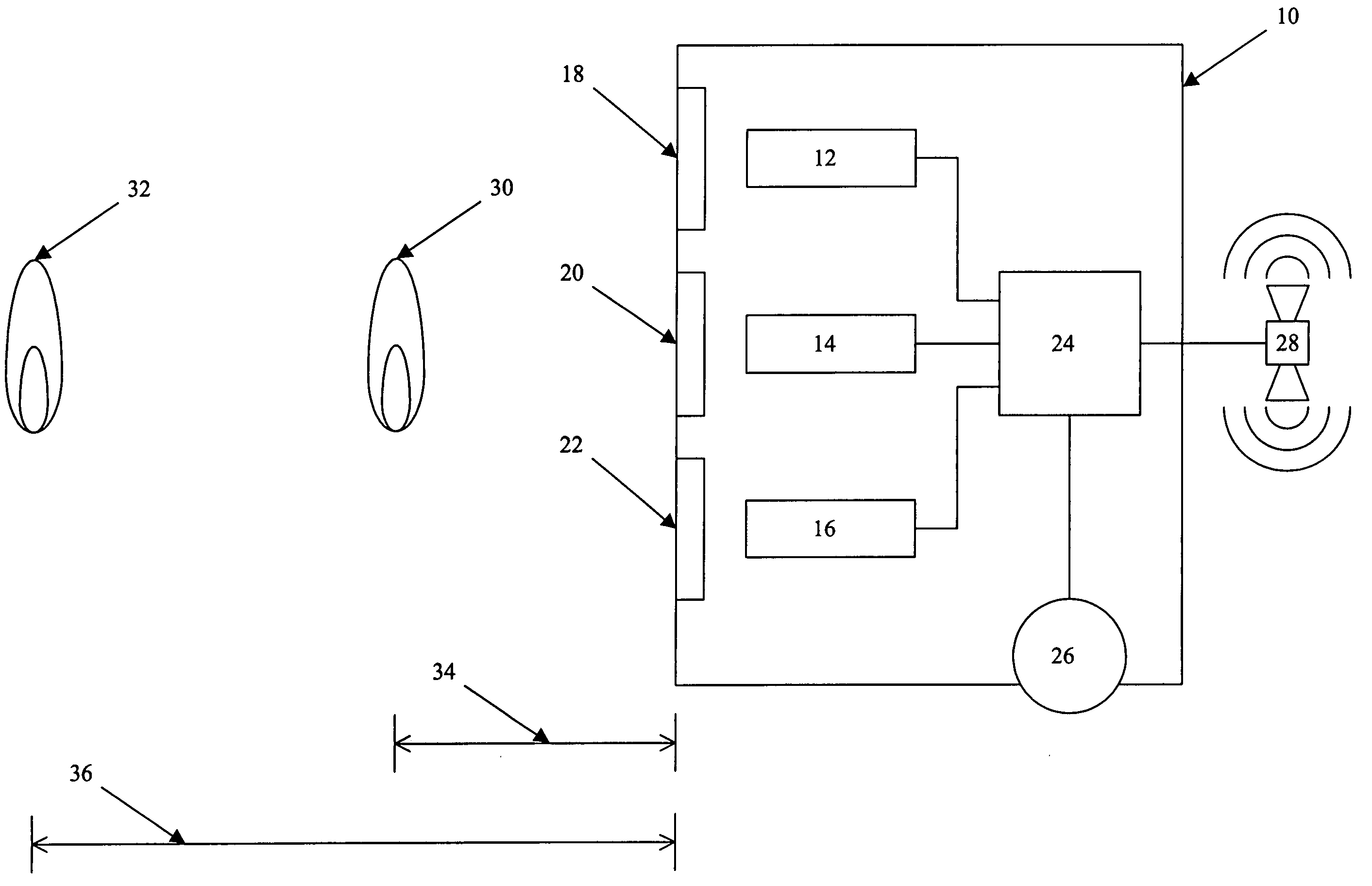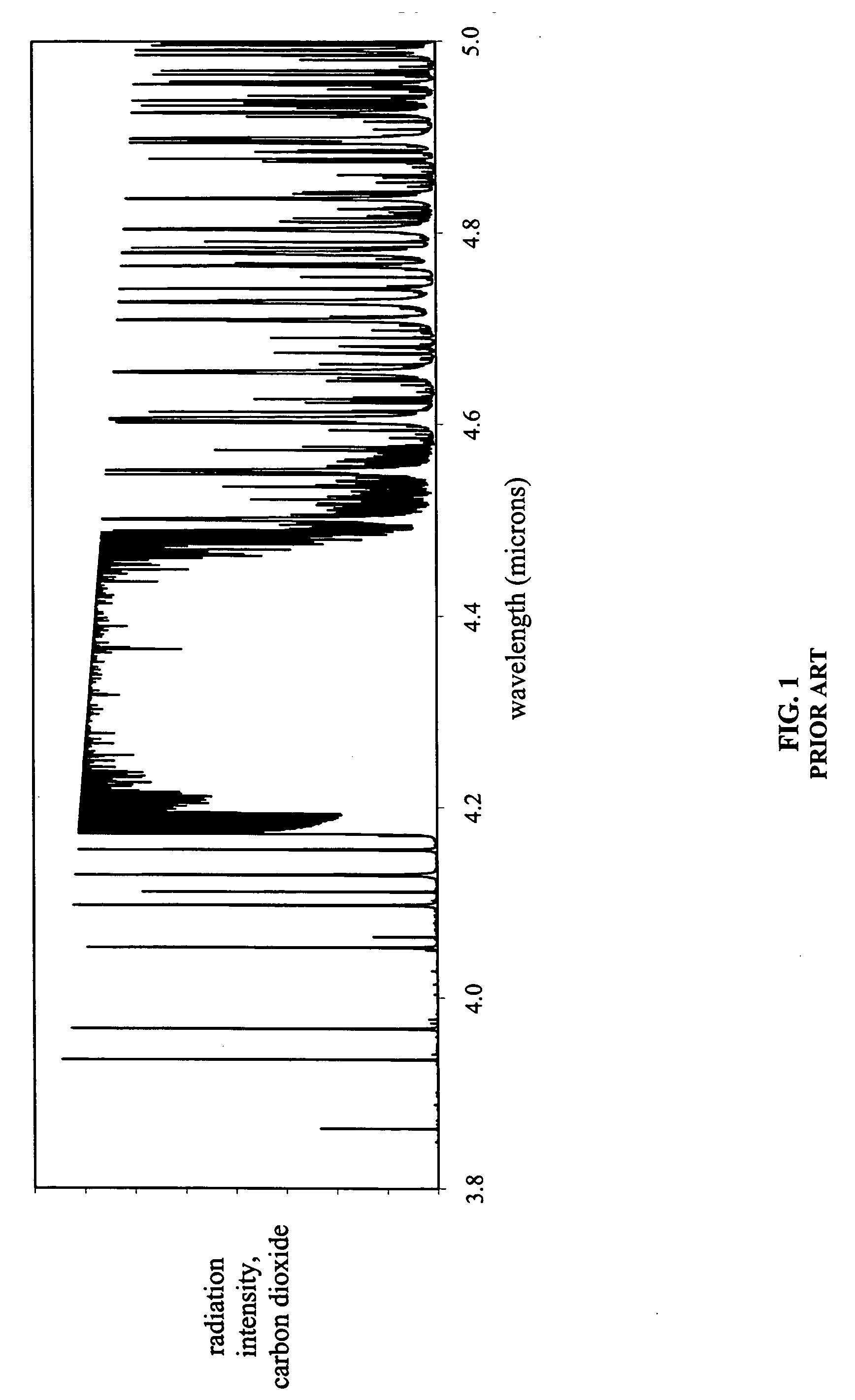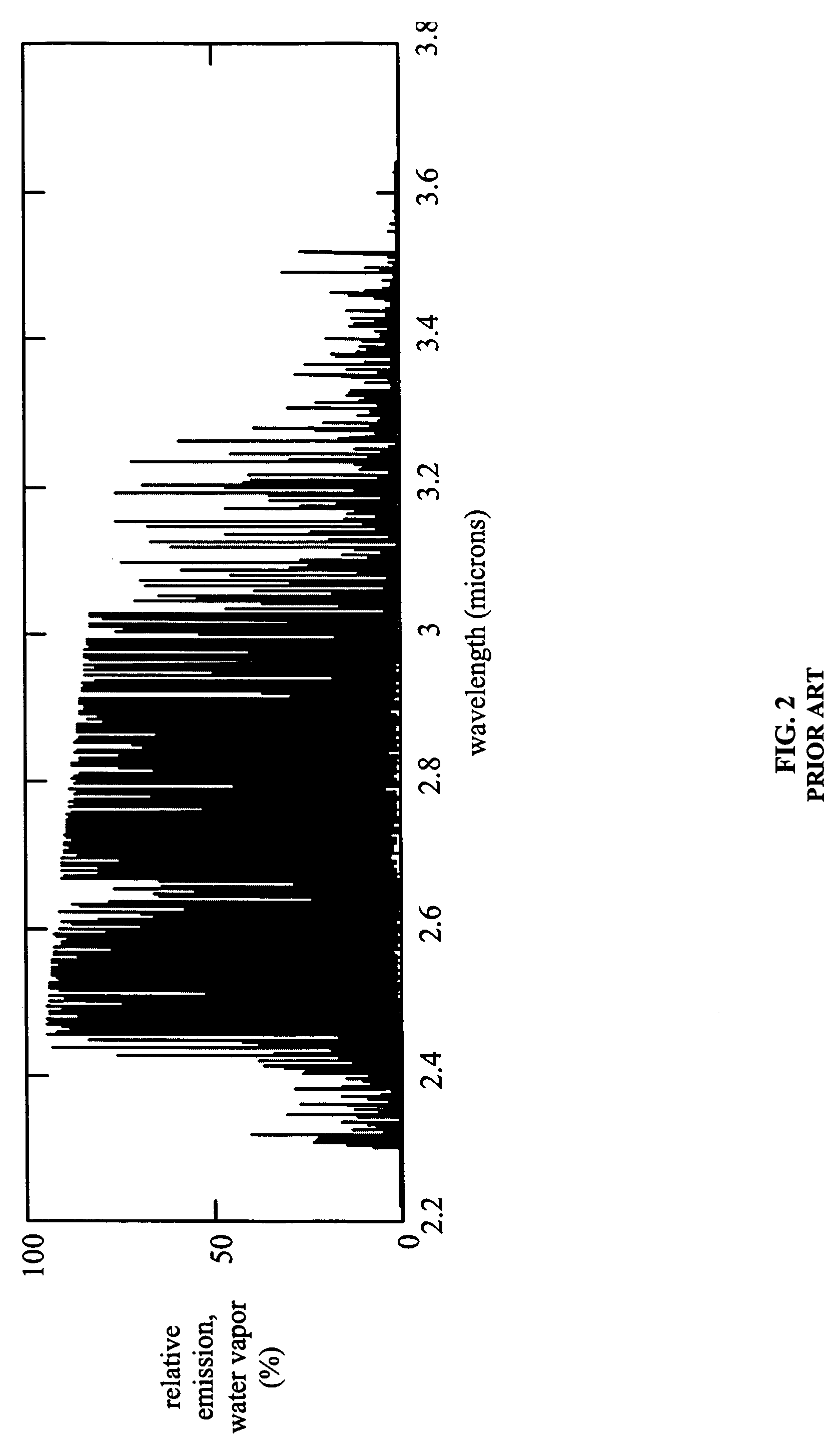However, regardless of its precise shape, this peak typically is exhibits relatively strong emissions with relatively weak emissions immediately to either side.
However, not all flames generate significant quantities of
carbon dioxide.
Some fuels lack carbon altogether, and thus do not produce
carbon dioxide when burned.
However, the infrared emission spectra produced by burning carbon-free fuels typically is different from the infrared emission spectra produced by burning carbon-bearing fuels.
However, the emission spectra of carbon-free fuels, which due to their lack of carbon do not generate significant quantities of carbon dioxide, typically do not exhibit the 4.4 micron carbon dioxide peak.
Moreover, the emission spectra of carbon-free fuels may not exhibit any other similarly well-defined peak that might be analyzed in a similar conventional manner.
However,
conventional analysis of those portions of the infrared flame spectrum has not provided a reliable indication of the presence of flames, and / or has not reliably excluded
false alarm sources.
However, with closely spaced peaks as shown in FIGS. 2 and 3, defining areas of low intensity to either side of a particular peak may be difficult.
Again, assuming a design is available to provide such precision in aligning the band to sense a peak such as those in FIG. 3, it may not be practical to manufacture.
Furthermore, the use of conventional
optics changes the apparent wavelength of incident
radiation.
Thus, even if a filter or other selector can be made with a suitably small bandwidth and a suitably precise pass band, a conventional approach to
flame detection using a water
emission band (or a band similarly lacking in readily isolated peaks) still would face significant obstacles to success in detecting actual flames.
However, simply ignoring or filtering the radiation to exclude false alarms from such non-flame sources may result in actual flames being masked.
Conventionally, however, it may be difficult to determine reliably whether the overall shape of an infrared
signal, particularly one that is broadly distributed in terms of wavelength, and / or of relatively low intensity, is representative of a fire or a
false alarm source.
However, such an arrangement is not necessarily sufficient to distinguish between an actual fire and a false alarm.
Consequently, such an arrangement may not be sufficient to reliably distinguish flames from false alarms.
However, increasing the number of monitored bands can increase the complexity of a
detector.
In summary, using conventional approaches for infrared sensing of flames from carbon-free fuels may
pose difficulties with regard to accurate detection of flames, reliability in rejecting false alarms, and complexity.
However, conventional approaches for sensing
ultraviolet and / or
visible radiation from flames burning carbon-free fuels may
pose similar difficulties to those described with regard to the conventional sensing of infrared radiation.
As noted above, the lack of a strong infrared peak poses difficulties for conventional infrared detectors.
In addition, as with conventional infrared detectors, false alarms are also a concern with ultraviolet flame detectors.
However, those vapors may absorb
ultraviolet radiation that is relied upon by some conventional flame detectors.
Consequently, the vapors themselves may interfere with conventional
flame detection, and / or false alarm exclusion.
In particular, molecular
hydrogen is notoriously difficult to identify in visible light.
However, such combinations conventionally may suffer from limitations similar to those of their individual spectra.
Thus, conventional approaches for using visible light to reliably detect carbon-free flames while avoiding false alarms also may be problematical.
Even for burning fuels that include carbon, and that emit hot carbon dioxide, conventional reliance on the carbon dioxide peak at 4.4 microns may
pose difficulties in at least some circumstances.
One such potential contaminant is cool carbon dioxide.
This may reduce the sensitivity of conventional carbon dioxide spectrum flame detectors.
However, the very act of suppressing that fire may effectively “blind” conventional carbon dioxide spectrum flame detectors in the vicinity.
In such circumstances, it might be difficult to determine whether the fire is extinguished or is still burning without clearing the area of the carbon dioxide fire suppressant.
Moreover, conventional carbon dioxide spectrum infrared flame detectors may have at best limited facility for discriminating between distant fires and fires within the area they are tasked to protect.
With conventional carbon dioxide spectrum infrared flame detectors it may be difficult to distinguish between a flame that is present in a monitored area, and thus represents a potential
hazard, and a flame that is far from the monitored area.
Stack flares typically represent known phenomena, and generally are not considered a legitimate alarm source.
However, stack flares often are visible for miles.
It may be difficult to distinguish with a conventional carbon dioxide spectrum infrared
flame detector between a distant stack
flare and a potentially hazardous flame nearby.
 Login to View More
Login to View More  Login to View More
Login to View More 


